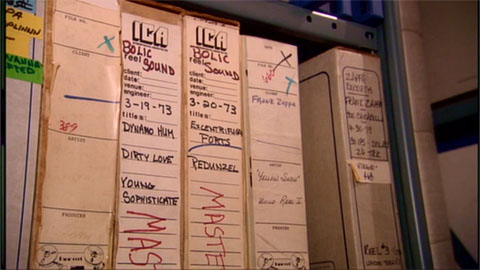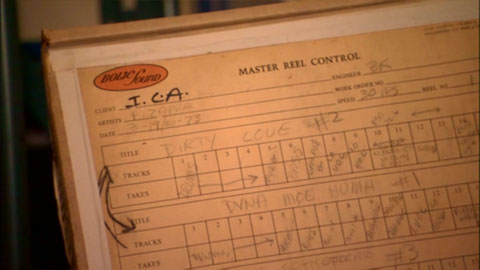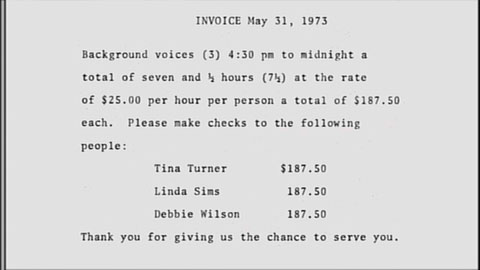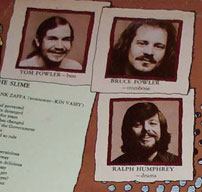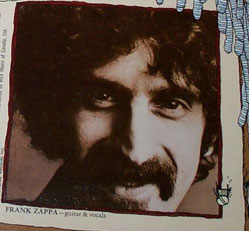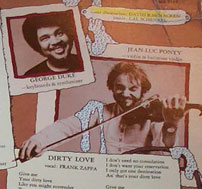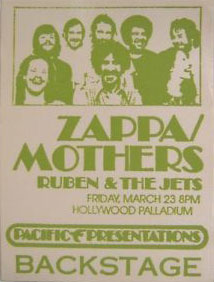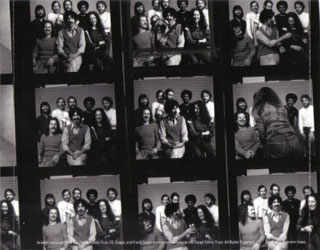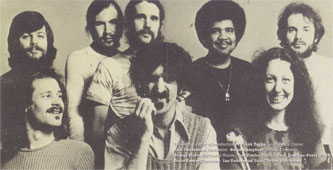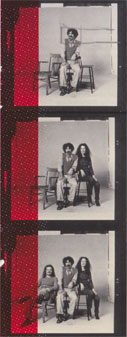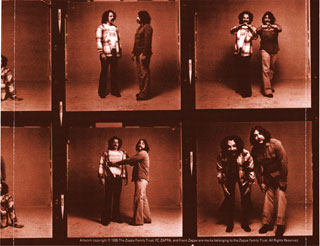The Recording Sessions
Liner notes by FZ, 1973
engineers:
BARRY KEENE
TERRY DUNAVAN
FRED BORKGREN
STEVE DESPERre-mix:
KERRY McNABBstudios:
BOLTIC SOUND
WHITNEY
PARAMOUNT
FZ, interviewed by Go-Set, Australia, July 14, 1973
Well, there's various procedures that I've used in recording albums and the new album which is out in the States in about four weeks is done in layers. Did the rhythm section—brought them in—most of the material they'd already played on stage—so I put the finishing touches on it as we "layered down". Certain things that are good for performance on stage were omitted on record because they didn't add anything to the event on record and certain things that would be impractical on stage were included to add interest to the record. After the rhythm section was down the vocals went on. And after the vocals we put on the horns, then the guitar solos. It went on in layers like that. I think it added to about two or three hundred hours onto this album.
FZ, interviewed by J.C. Costa, International Musician And Recording World, February, 1979
When we made the second deal with Warner Bros. they, in their infinite wisdom, allowed us a budget of $60,000 per album. And this was a time when your average 'big time' group was spending a quarter of a million per album.
Vocals
FZ, interviewed by Charles Shaar Murray, Go-Set, September 22, 1973
I am back in the singing business again. For the kind of lyrics that I write, it's hard to get somebody else to identify with them to the extent that they express 'em properly. There's millions of people who can sing better than me, but there's not many who understand the lyrics sufficiently to get them across. So I figured that I might as well do it myself. I have a pretty limited range—I can't sing very high so there are certain things that have to be done by other people. Ninety percent of that album is me singing the lead vocals.
FZ, interviewed in April 7, 1973 by Dan Foote, Chuck Bufe & John Ridgway, New Times, April 18, 1973
We've been in the studio for about three weeks and you ought to hear that stuff; that's terrifying. I mean, I hate to even come out to do a show sometimes when I know how good it can sound in the studio.
March 19-20, 1973—Bolic Sound, Inglewood, CA
Classic Albums (2007)—0:06:50
Bolic Sound, 3-19-73, Dynamo Hum, Dirty Love, Young Sophisticate. Master.
Bolic Sound, 3-20-73, Excentrifugal Forts, Redunzel. Master.
Joe Travers, Classic Albums (Bonum) (2007)—0:28:36
This is the original for "Dirty Love," "Dinah-Moe Humm," recorded March 19th and 20th, 1973, and this is Barry Keene's handwritting at Bolic Sound.
Greg Russo, Cosmik Debris: The Collected History And Improvisations Of Frank Zappa (The Son Of Revised), 2003, p. 286
03/19/73 (11AM-2PM, 3-6PM & 6:30-11:30PM) Bolic Sound—Dinah-Moe Humm; Dirty Love; For The Young Sophisticate; Roadie Music (Part One)
MUSICIANS: FZ, George Duke, Tom Fowler, Ralph Humphrey03/20/73 (1-4PM & 5-9:30PM) Bolic Sound—Excentrifugal Forz; Montana; Curse Of The Zombads
MUSICIANS: FZ, George Duke, Tom Fowler, Ralph Humphrey
April 3-4, 1973—Whitney Studios, LA
Greg Russo, Cosmik Debris: The Collected History And Improvisations Of Frank Zappa (The Son Of Revised), 2003, p. 286
04/03/73 (1-4PM, 4:30-7:30PM & 8-11PM) Whitney Studios, Glendale, CA—Inca Roads, Fifty-Fifty
MUSICIANS: FZ, George Duke, Tom Fowler, Ralph Humphrey, Ian Underwood, Ruth Underwood, Bruce Fowler, Salvador Marquez04/04/73 (1-4PM & 4:30-7:30PM) Whitney Studios, Glendale, CA—Redunzl; Camarillo Brillo
MUSICIANS: FZ, George Duke, Tom Fowler, Ralph Humphrey, Ian Underwood, Ruth Underwood, Bruce Fowler
Nigey Lennon, interviewed by Bob Dobbs, August 7, 1995
[FZ] used some of that personnel—for lack of a better term people tend to call that group the "Petit Wazoo." It was really terrific stuff, and I was there for those sessions—they were being held at Whitney Studios, and Paramount [Studios in Hollywood], but mostly at Whitney in Glendale.
Nigey Lennon, interviewed by Andrew Greenaway, The Idiot Bastard, June 15, 2000
I contributed the following to the tracks on Over-Nite Sensation: keyboard and rhythm guitar parts on "Dirty Love"; guitar on "Camarillo Brillo"; backup vocals on "Dirty Love" (which were later re-recorded by Tina Turner); backup vocals on "Camarillo Brillo" (which were not used); and a few VSO'd vocals on "Camarillo Brillo" (which are audible). These tracks were recorded at Whitney Studios in Glendale.
May 26-June 1, 1973—Bolic Sound, Inglewood, CA
Classic Albums (2007)—0:20:16
INVOICE May 31, 1973
Background voices (3) 4:30 pm to midnight a total of seven and 1/2 hours (7 1/2) at the rate of $25.00 per hour per person a total of $187.50 each. Please make checks to the following people:
Tina Turner $187.50
Linda Sims 187.50
Debbie Wilson 187.50Thank you for giving us the chance to serve you.
Greg Russo, Cosmik Debris: The Collected History And Improvisations Of Frank Zappa (The Son Of Revised), 2003, p. 287
05/26/73 (12-4PM & 4:30-8:30PM) Bolic Sound—Montana; Cosmic Debris
MUSICIANS: FZ, Ian Underwood05/29/73 (12-3PM, 3:30-6:30PM & 7-10PM) Bolic Sound—Cosmik Debris; Zomby Woof; Fifty-Fifty
MUSICIANS: FZ, Ralph Humphrey, George Duke, Tom Fowler, Ruth Underwood05/30/73 (12-3PM, 3:30-6:30PM & 7-10PM) Bolic Sound—Zomby Woof; Wonderful Wino
MUSICIANS: FZ, Ralph Humphrey, Ruth Underwood, George Duke, Tom Fowler, Bruce Fowler, Salvador Marquez06/01/73 (10AM-1PM, 1:30-4:30PM, 5-8PM & 8:30-11:30PM) Bolic Sound—Zomby Woof; Wonderful Wino; Cosmik Debris; Fifty-Fifty
MUSICIANS: FZ, Bruce Fowler, Jose Salvador Marquez, Ian Underwood
